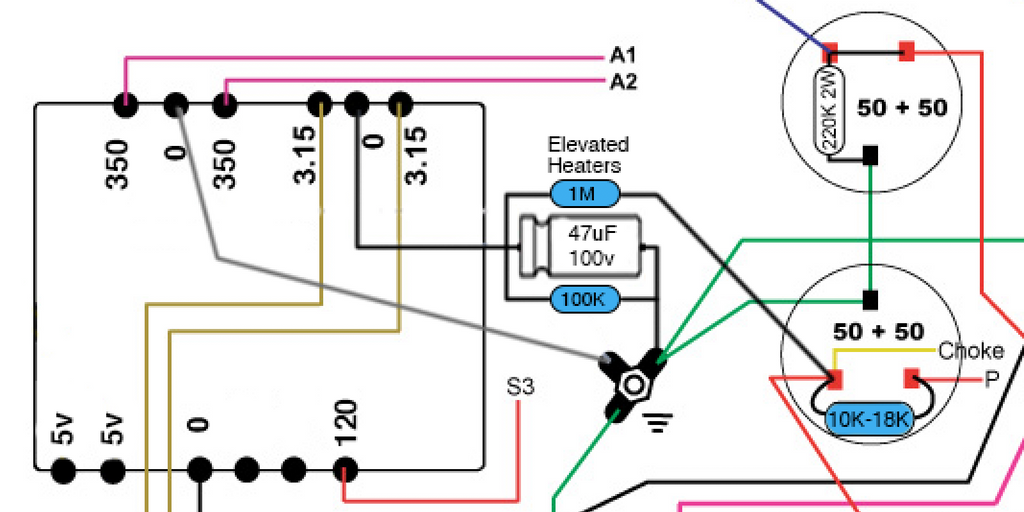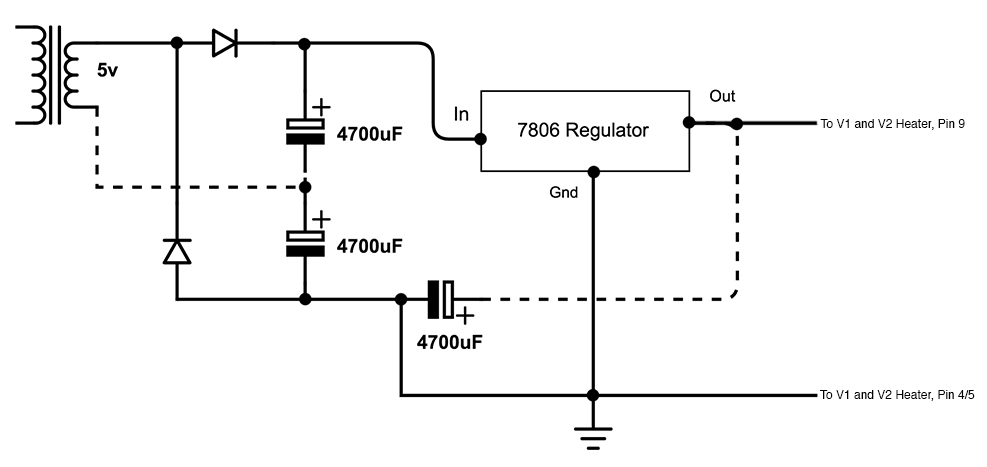I am starting a build based on this amp from Ceriatone (Chupacabra): http://www.ceriatone.com/ceriatone/w...0Sept-2015.jpg
As you can see, this particular circuit, as Ceriatone designed it, incorporates DC Heaters—on V1 and V2 only—by using the JTM45-style 1202-55 Power Transformer's 5v taps. Since that amp originally used a tube rectifier and this one uses SS diodes, those taps are free for use.
Anyway, I read on another forum where some people were saying this method of running DC Heaters wasn't very good. So my question is what would y'all do instead? The amp is high-gain. And very angry sounding (in a good way).
Options:
1. Do nothing and run the amp with regular AC Heaters.
2. Use the DC Heater scheme as Ceriatone does it in the above layout.
3. Install a simple Humdinger pot at the end of the heater string.
Or...
4. Elevate the heaters as I've drawn here. Did I do this correctly? Is that a good place to reference the heaters or is there a better place where the B+ might be more filtered? I found a schematic on this site for the Yeti, which is a similar amp. HT2 at this point in that schematic was listed at 465v. Using that number, I calculate 42.3v for an elevated heater reference. But no way of knowing for sure because I haven't built the amp yet and I'm probably using a different PT transformer. LINK: http://orig10.deviantart.net/d4cd/f/...lm-dbaw3uv.jpg
Thanks!
As you can see, this particular circuit, as Ceriatone designed it, incorporates DC Heaters—on V1 and V2 only—by using the JTM45-style 1202-55 Power Transformer's 5v taps. Since that amp originally used a tube rectifier and this one uses SS diodes, those taps are free for use.
Anyway, I read on another forum where some people were saying this method of running DC Heaters wasn't very good. So my question is what would y'all do instead? The amp is high-gain. And very angry sounding (in a good way).
Options:
1. Do nothing and run the amp with regular AC Heaters.
2. Use the DC Heater scheme as Ceriatone does it in the above layout.
3. Install a simple Humdinger pot at the end of the heater string.
Or...
4. Elevate the heaters as I've drawn here. Did I do this correctly? Is that a good place to reference the heaters or is there a better place where the B+ might be more filtered? I found a schematic on this site for the Yeti, which is a similar amp. HT2 at this point in that schematic was listed at 465v. Using that number, I calculate 42.3v for an elevated heater reference. But no way of knowing for sure because I haven't built the amp yet and I'm probably using a different PT transformer. LINK: http://orig10.deviantart.net/d4cd/f/...lm-dbaw3uv.jpg
Thanks!



Comment